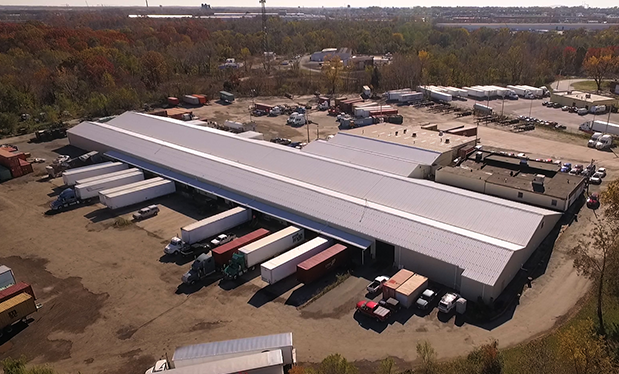Foreign-worker visas may not solve labor shortage
Construction industry employers seeking unskilled workers may be able to recruit more workers if the Department of Homeland Security (DHS) grants a greater number of foreign-worker visas during the 2017 fiscal year.
Under the budget that funds the federal government through the end of the fiscal year, DHS can double the number of foreign-worker visas beyond the 66,000 currently allowed under the H-2B program, the federal government's seasonal guest worker program. The law stipulates DHS first must determine "the needs of American businesses cannot be satisfied in fiscal year 2017 with U.S. workers who are willing, qualified and able to perform temporary nonagricultural labor."
Sonia Ramirez, director of government affairs at North America's Building Trades Unions (NABTU), told Bloomberg BNA the worker shortages many construction trades are experiencing can be filled by U.S. workers if employers invest in training. NABTU supports a re-examination of the rules that guide the H-2B program, and Ramirez says the industry should invest in the economic development of U.S. workers.
"We can pretty quickly up-skill or re-skill to meet the needs of the industry," Ramirez says.
However, expanding the number of foreign-worker visas allowed under the H-2B program may not solve the labor shortage for construction contractors, Brian Turmail, executive director of public affairs for Associated General Contractors of America, told Bloomberg BNA.
"We'll take any step we can get, but it's not the silver bullet that's going to solve the problem," Turmail says.
Construction contractors should instead focus on investing in training, providing higher wages and benefits, and developing relationships with high schools to promote the construction trades, Turmail explains.
Renewable energy industry employed nearly 10 million in 2016
The renewable energy industry employed 9.8 million people in 2016—an increase of 1.1 percent from 2015, according to Bloomberg BNA.
Although growth has slowed during the past two years, the solar photovoltaic (PV) and wind categories more than doubled their numbers of employees since 2012.
"The nature of jobs is changing a little bit, with more emphasis on the installation, operational and maintenance side," says Adnan Amin, director general of the International Renewable Energy Agency, which recently released an annual report. "That doesn't grow as fast as the growth in manufacturing, which was very quick because the technology cost was coming down and you had this huge explosion in equipment."
Global renewable energy employment has increased every year since 2012, with solar PV becoming the largest segment by total jobs in 2016. Solar PV employed 3.09 million people, liquid biofuels employed 1.7 million, and the wind industry employed 1.2 million—a 7 percent increase from 2015.
Employment in renewables, excluding large hydropower, climbed 2.8 percent to 8.3 million people in 2016. China, Brazil, the U.S., India, Japan and Germany led the job markets. Asian countries accounted for 62 percent of total jobs in 2016 compared with 50 percent in 2013.
According to the International Renewable Energy Agency, renewable energy jobs could reach 24 million in 2030 as more countries work to address climate change.
Former Fowler & Peth CEO passes away

Peth |
Eric "Ric" Peth, former president and CEO of Fowler & Peth Inc., Denver, passed away May 8. He was 64.
After college, Peth worked for his family's business, serving as branch manager for Fowler & Peth's Casper, Wyo., location for seven years. Eventually moving to Denver to work at Fowler & Peth's warehouse and corporate offices, Peth gained leadership experience before becoming president and CEO of Fowler & Peth in 1994. He held the position for 17 years until the company was sold to Beacon Roofing Supply Inc., Herndon, Va., in 2011. A member of the Colorado Roofing Association, Peth's company was a distributor of roofing and related exterior building products. Peth is survived by his wife, Jamie; children, Casey, Madison and Patrick; grandchildren, Dax, Jade and Oliver; brother, Kurt; sister-in-law, Vickie; niece, Torrie; nephew, Andy; aunt, Melba; and cousins, Paul and Tim.
Donations in Peth's memory may be made to the National Sports Center for the Disabled at nscd.org/donate or P.O. Box 1290, Winter Park, CO 80482.
Former NRCA president passes away

Karp |
Burton J. Karp, founder of Burton J. Karp & Associates, Ivoryton, Conn., former CEO of The Eagle Group Inc., West Hartford, Conn., and a former NRCA president, passed away July 4. He was 81.
Karp joined the roofing industry in 1958 and evolved into an industry leader through his active involvement with the North/East Roofing Contractors Association, NRCA and The Roofing Industry Alliance for Progress. Karp served as NRCA president in 1983 and received the prestigious J.A. Piper Award for outstanding service to the industry in 1989. In addition to his industry contributions, Karp will be remembered for his philanthropy and passion for sailing. He is survived by his partner, Jo Kelly; children, Dale, Jamie and Michael; brother, Joel; six grandchildren; and many nieces and nephews.
Donations in Karp's memory may be made to Middlesex Hospital at middlesexhospital.org/donate or Office of Philanthropy, Middlesex Hospital, 28 Crescent St., Middletown, CT 06457.
Commercial Construction Index indicates high expectations
Commercial construction is in high demand throughout the U.S., and contractors are optimistic about the industry's trajectory, according to the USG + U.S. Chamber of Commerce Commercial Construction Index, which launched June 15. Ninety-six percent of contractors surveyed expect revenues to grow or remain stable during 2017.
The index is a new quarterly economic indicator designed to gauge what drives the commercial construction industry and its leaders, including issues such as backlog of work, new business pipeline, revenue projections, workforce issues and access to financing. Given the sector's importance to the U.S. economy, the data will be vital to better understanding trends, challenges and opportunities.

Contractors' current backlog levels represent 81 percent of their ideal backlog levels
The research was developed with Dodge Data & Analytics by surveying commercial and institutional contractors.
"This first-of-its-kind index was born out of a need to understand the issues that affect commercial construction. The index will deliver critical insights into the future health of the industry," says Jennifer Scanlon, president and CEO of USG Corp. "USG is committed to providing solutions for our customers in order to help the entire industry make strong contributions to the U.S. economy. Through the index we are able to identify areas of strength and pinpoint areas of improvement where industry leaders must focus."
Two-thirds of contractors said they expect to employ more workers during the next six months, but 61 percent of respondents reported difficulty finding skilled workers. The biggest shortages were reported in the concrete, interior finishes/millwork, masonry, electrical and plumbing trades.
"The commercial construction industry is a vital engine for the American economy," says Tom Donohue, president and CEO of the Chamber of Commerce. "The projected growth uncovered in this research is good news for employers and workers, but there is reason for concern in the lack of qualified talent available in vital specialties. To get our economy growing to its full potential, we must ensure that we have a workforce that is ready to fill the available jobs. Each quarter, this first-of-its-kind research will make us smarter about future challenges and inform solutions for our country's leaders."

Contractors continue to report high or moderate confidence in the market
The report uses the results of three leading indicators—backlog levels, new business opportunities and revenue forecasts—to generate a composite index on a scale of 0-100 that serves as an indicator of health for the contractor segment on a quarterly basis. The quarter two 2017 composite index score was 76, representing continued health in the sector; this is up two points from 74 in the quarter one survey, primarily driven by a bump in the ratio between actual and ideal backlog. New business and revenue results also saw slight increases from the first quarter to the second quarter.
The following were the composite scores from the three drivers of confidence in the second quarter:
- Backlog: 81, up four points
Contractors' current average backlog levels represent 81 percent of their ideal backlog levels, up from 77 percent in quarter one. On average, contractors currently hold 9.9 months of backlog; the ideal amount is 12 months. - New Business: 77, up two points
Nearly all contractors continue to report high or moderate confidence in the market. Fifty-nine percent of contractors reported high confidence in new business during the next 12 months (up from 51 percent in quarter one), indicating a shift to higher levels of confidence among some respondents. - Revenues: 71, up two points
Ninety-six percent of contractors expect revenues to grow or remain stable in 2017 compared with 2016. Of those expecting revenue increases, the actual percentage of expected increases varies. Forty percent expect revenue increases of 7 percent or more during the next 12 months.

Most contractors expect revenues to grow or remain stable in 2017
The index findings are compiled using survey results from contractors within a Dodge Data & Analytics panel of more than 2,700 decision makers from key facets of the commercial construction industry. The first public report was developed using research from previous quarters, which puts into context the state of contractor sentiment in the U.S. building industry.



